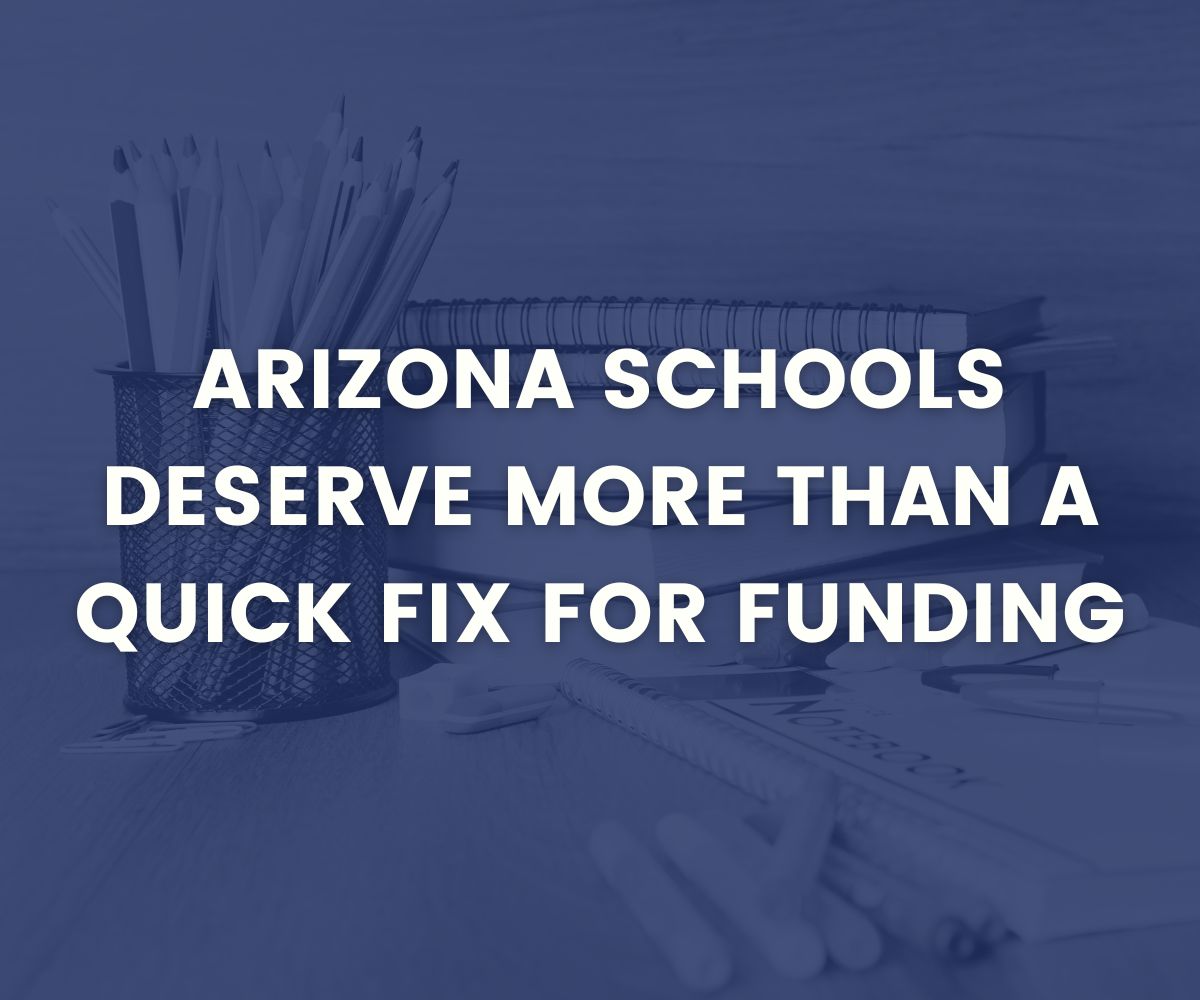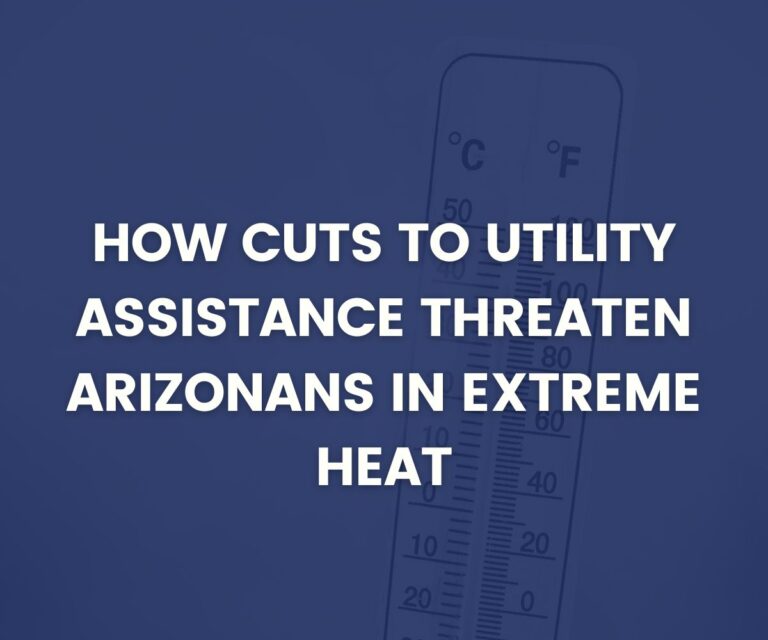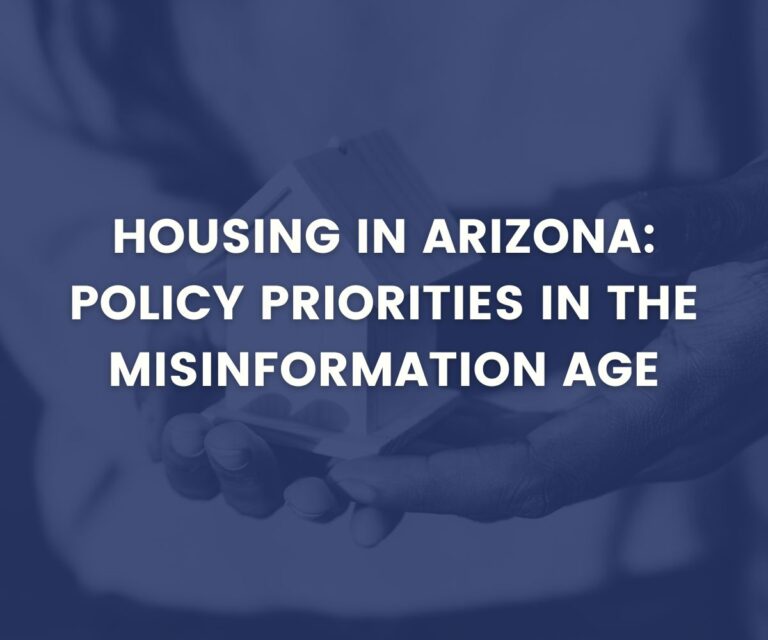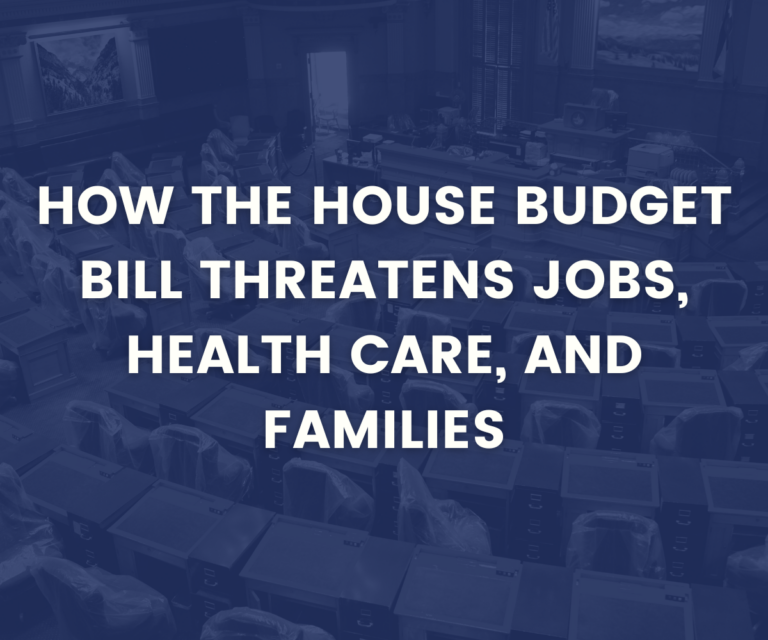
Prop 123 Is Expiring, but Schools Need More Than Just Funding
Proposition 123, passed by Arizona voters in 2016, will expire in just a few months. It provides additional funding to the K-12 education Basic State Aid formula by increasing the distribution from the state land trust from 2.5 percent to 6.9 percent for ten years. If Proposition 123 is allowed to expire, the state’s General Fund will need to backfill the $285 million the land trust currently provides. Governor Hobbs recently proposed permanently increasing the distribution to 5.5 percent along with an additional distribution of 1.4 percent which would be for 10 years.
Governor Hobbs’ proposal also recognizes the need to address harmful triggers included in the original Proposition 123 that, if left in place, could result in reduced support for K-12 education regardless of whether the increased distribution from the land trust is continued. As we explain below, it is important to address the triggers in the extension of Prop 123 to protect K-12 education funding.
Why Proposition 123 was needed.
State law requires that the K-12 formula (Basic State Aid) be increased by 2% or inflation, whichever is less. Beginning in budget year 2010 and continuing through budget year 2013, the legislature attempted to balance the state’s budget by not fully funding the required inflation increase. A lawsuit resulted in a court decision confirming that the inflation adjustments must be fully funded. Proposition 123 was part of the solution – it relieved the pressure on the state’s General Fund by allowing increased distributions from the trust fund into the K-12 formula for ten years.
Proposition 123 also included triggers that allow inflation increases to be suspended.
While we tend to think of Proposition 123 as allowing more trust fund dollars to flow into the K-12 funding formula, it also included triggers that would allow the legislature to ignore the annual inflation increase or even reverse prior inflationary adjustments.
These triggers are:
- If state sales tax growth and nonfarm employment growth fall between 1 percent and 2 percent, the legislature is not required to make the inflationary adjustments. If the growth rates in both categories fall below 1 percent, the legislature is prohibited from making the inflation adjustments.
- If the Department of Education General Fund appropriation reaches 49 percent of total General Fund appropriations, the legislature may forego the annual adjustment and may reduce funding for the next budget year by the amount of the inflationary adjustment in the current year. If the Department of Education General Fund appropriation reaches 50 percent of total General Fund appropriations, the legislature may forego the annual adjustment and may reduce funding for the next budget year by twice the amount of the inflationary adjustment for the current year. Currently, the Department of Education funding is 47.3% of total General Fund spending.
Since the passage of Proposition 123, the Arizona legislature has passed laws that make it more likely the Department of Education budget will reach 49 percent or more of General Fund spending.
- The legislature has shifted K-12 formula spending away from local property taxes to the General Fund.
The K-12 formula is funded by local property taxes, the trust fund, a sales tax dedicated to education, and the General Fund. The General Fund is the last funding source - it fills in the amount remaining after the other funding sources have contributed. Changes to property tax laws often affect the General Fund requirements for the K-12 funding formula.
Since Proposition 123 was passed, the legislature has:
-
- Eliminated the statewide equalization tax rate (SETR). The SETR was a uniform property tax applied by all taxable property in the state. It provided funding for public schools, reducing the need for General Fund dollars. When it was repealed in 2022, K-12 General Fund spending was increased by $331 million. (See AZCenter's blog on SETR)
-
- Increased the homeowner’s rebate. State law caps the amount of property taxes homeowners pay. In 2021, the Arizona legislature changed the percentage of the homeowners’ rebate from 47.19% to 50%, which resulted in a $31 million per year decrease in property taxes and an offsetting $31 million per year increase in the state’s General Fund.
-
- Changed state laws regarding business personal property depreciation. In 2022, the legislature changed the methodology for calculating agricultural personal property depreciation. This reduced property tax collections for K-12 education by an estimated $30 million. (See 2022 HB2822 fiscal note)
-
- Reduced Class One (commercial) property assessments. In 2021 and again in 2022, the Arizona legislature made changes to the formula that determines property taxes for commercial property. This shifted the costs of education to the General Fund by $16 million. (See 2022 SB1093 fiscal note)
In 2016 when Proposition 123 passed, property taxes paid 41 percent of the education funding formula, with the General Fund providing 55 percent. Today, property taxes provide 26 percent while the General Fund provides 68 percent.
- The legislature has expanded Empowerment Scholarship Accounts (ESAs), increasing Education’s General Fund spending.
Empowerment Scholarships are paid out of the Department of Education’s Basic State Aid budget line, the same budget line that provides the majority of funding for public schools. While debates continue about whether ESAs are less expensive than spending for public school students when all funds are considered, there is no debate that ESAs are increasing General Fund spending in two ways:
-
- Students who have attended a district school and move to a private school or homeschooling utilizing an ESA require increased General Fund spending. This is because Basic State Aid for public school students comes from a combination of local property taxes, the trust fund, the education sales tax, and the state’s General Fund, while ESAs are funded entirely from the General Fund. The additional General Fund cost for ESAs for students leaving district schools depends on how much property taxes are collected in the district the student previously attended. Districts that can raise all their required spending from property taxes receive no General Fund dollars in the funding formula, while other districts receive a significant amount of their formula spending from the General Fund.
-
- Students who have not attended a district or charter school prior to enrolling in the ESA program require full funding from the General Fund. There are no offsetting savings in the Basic State Aid formula.
In 2016, when voters passed Proposition 123, 2,175 students were enrolled in ESAs at a cost of $28.6 million. For the next budget year, the Joint Legislative Budget Committee staff estimates ESA students will reach 97,905 at a cost of more than $1 billion.
- The legislature has decreased General Fund spending in other areas of state government.
The 2024 legislature shifted $200 million in General Fund spending in AHCCCS, the Department of Corrections, and the Department of Juvenile Corrections to other funds. As a result, the Department of Education’s portion of General Fund spending is higher than it would otherwise be. If shifts such as these continue in the future, the Department of Education will reach 49% or more much faster than if General Fund spending in other areas was not shifted. In addition, if the increased distribution from the trust fund is not renewed or is used for other purposes, General Fund spending in K-12 education will increase by $285 million while total spending will remain unchanged.
Regardless of how trust fund dollars will be dedicated, the Arizona legislature needs to ask Arizona voters to address the other Proposition 123 requirements that will otherwise trigger cuts to K-12 education.



